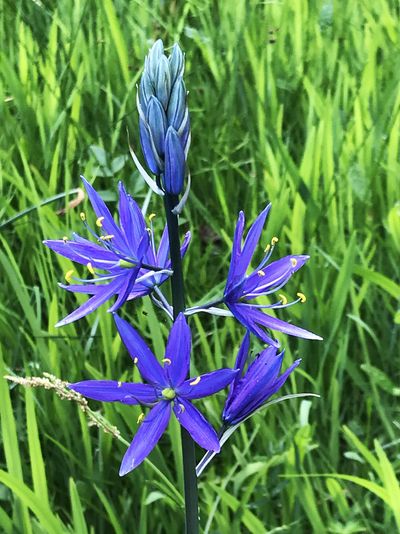In the Garden: Digging up variety for spring blooms

Warning: while purchasing spring-flowering bulbs is great fun this time of year, remember that you have you dig a hole for every one of them.
I apparently didn’t consider this when I placed a recent order for some specialty bulbs because there were so many I wanted for my garden. But after submitting my order, I discovered I’d purchased 140 bulbs.
Should my husband question this when the package arrives, I plan to hold Jacqueline van der Kloet responsible for my triumphant shopping experience. She delivered the keynote address at last month’s garden writers conference and, as one of Holland’s best-known gardening authorities and designers, she spoke about the contribution spring-flowering bulbs make to a landscape.
By planting them, she told us, we have the opportunity to add up to eight weeks to the beginning of our growing season. Since the Inland Northwest has a rather short season, that idea really resonated with me.
When most folks hear about spring-flowering bulbs – which are planted in the fall – they tend to think of tulips, daffodils and hyacinths. While I do have representatives of each of these in my flower beds, I focused this year’s shopping list on some of the lesser-known bulbs that deserve space in the garden. All of the following are hardy to zones 4 or 5. My plan is to follow Van der Kloet’s suggestion of mixing the bulbs together, tossing them onto the soil and planting them where they land for a more natural look.
One bulb that got my attention during her presentation was a rodent-resistant crocus. Many folks have told me that squirrels like to eat their crocus bulbs and flowers. It turns out that snow crocuses (Crocus tommasinianus) are unlikely to attract them. I selected Lilac Beauty, but other choices include Barr’s Purple, Roseus and Ruby Giant.
Ornamental onions (alliums) come in different shapes and sizes and add pizzazz to flower beds. Two years ago, I planted Ivory Queen (A. karataviense) and Purple Sensation (A. aflatunense) and have really enjoyed them. Van der Kloet recommended Allium nigrum (A. multibulbosum), commonly known as broadleaf garlic or black garlic. Featuring white cloud-like blossoms, these plants grow 18 to 24 inches tall.
In addition to ordering some of them, I also picked up some alliums called Sicilian honey garlic (Nectaroscordum siculum ssp. bulgaricum). I had seen them in an English garden this summer and they really caught my eye. The flower heads, on top of 24- to 36-inch stalks, have downward-facing blossoms with red and cream-colored petals. The leaves tend to twist, further adding interest to plantings.
Another allium that has recently caught my eye – after placing my bulb order, unfortunately – is yellow-flowered garlic (A. flavum). They grow 7 to 12 inches tall and feature flower heads that look like golden fireworks.
One bulb that I repeatedly saw in English gardens was Camas lily (Camassia leichtlinii). With their stately height of 24 to 36 inches, strappy leaves and attractive flower spikes, I’m certain they’ll be a winner no matter where I plant them. I chose white-flowered Alba, but other options include Caerulea Blue, Caerulea Blue Heaven, Caerulea Sacajewea, Pink Stars, and Semiplena.
The final bulbs I chose were Golden Fragrance grape hyacinths (Muscari macrocarpum). While I have hundreds of the common blue grape hyacinths, Golden Fragrance offers tubular yellow flowers with a sweet fragrance.
You’ll have to excuse me now as I’ve got a few holes to dig.
Susan Mulvihill is co-author, with Pat Munts, of “Northwest Gardener’s Handbook.” Contact her at Susan@susansinthegarden.com. Watch this week’s “Everyone Can Grow A Garden” video on youtube.com/c/susansinthegarden.